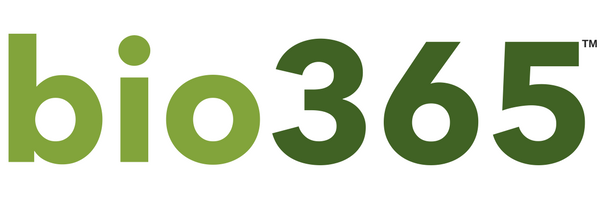3 Critical HLVd Preventative Practices Every Cannabis Grower Should Follow
/Hop Latent Viroid (HLVd or HLV) is on the rise again in parts of the United States, and every cannabis grower should be following critical HLVd preventative practices to protect their crops and their revenue.
What is Hop Latent Viroid?
HLV is an infectious pathogen that causes disease in cannabis plants. It was first discovered decades ago in hop plants, and its first known appearance in cannabis plants happened in the 2010s. The virus was officially identified in 2019 in a California cannabis cultivation farm as the cause of stunting (i.e., dudding disease).
As a latent viroid, HLVd is a silent killer capable of lying dormant in cannabis plants for a long time without exhibiting any symptoms at all. Fast forward to 2021, and HLVd grew into a widespread problem verging on disaster for cannabis growers across the United States and Canada.
How Does HLVd Spread in Your Grow Facility?
HLVd primarily spreads in two ways: mechanical transmission and infected clone transmission. Let’s take a closer look at each method of transmission.
Mechanical Transmission
Mechanical transmission of HLVd refers to spreading the viroid by touch. When an object infected with HLVd touches a cannabis plant, the viroid can be transmitted from the object to the plant causing the plant to become infected as well.
The most common ways HLVd is transmitted mechanically to cannabis plants is through tools and equipment, such as pruning tools, cutting equipment, and even pots used for growing and transplanting. For example, when you prune an infected plant, and then use the same tools to prune an uninfected plant, HLVd can be transmitted to the uninfected plant.
Infected Clone Transmission
Infected clone transmission happens when clones taken from an infected mother plant are brought into your grow facility. Typically, clones taken from an infected mother have lower rooting success rates, but if the clones make it past rooting, 10-30% of your plants could succumb to HLVd.
What Happens if Your Cannabis Plants Have HLVd?
With no obvious early signs, HLVd can cause significant problems for your plants and revenues. When the viroid comes out of latency, common symptoms include:
Stunted growth in height and leaf sizes
Reduced flower mass
Smaller and looser buds
Brittle stems
Abnormal branching
Malformation of leaves
Chlorosis of the leaves
Reduced trichomes and resin
Reduced oil production
Reduced vigor
Shorter internodal spacing and smaller leaves at the vegetative state
If your plants are infected with HLVd, quality and yields will drop, and ultimately, your revenues will drop as well. Research conducted with 100 California cannabis growers from August 2018 to July 2021 by Dark Heart Laboratory found that 90% of the participating cultivation sites tested positive for HLVd.
At the time, cannabis industry analysts projected that HLVd affects more than 30% of all cannabis plants. As a result, HLVd can cause billions of dollars in annual losses for the cannabis industry if growers don’t take steps to prevent it before it happens.
How to Prevent HLVd in Your Grow Facility
Unfortunately, HLVd is a latent viroid that can be present for a long time before you see any symptoms. It’s also not quick or easy to eradicate HLVd from your facility. Prevention is the best way to protect your plants and your revenues.
Follow the 3 S’s to keep HLVd out of your grow facility:
1. Sanitation
Since the most common way HLVd is transmitted is when an infected object touches an uninfected plant, it’s critical that you sanitize all tools, equipment, and so on – anything that could touch a plant. Typical sanitation solutions won’t destroy HLVd, so use a solution containing 10% bleach (i.e., 1 part bleach, 9 parts water) instead.
You should also consider moving away from using pots, which can transmit HLVd to your cannabis plants. Instead, use single-use grow bags to improve cleanliness and reduce transmission.
For example, you can switch to bio365’s single-use, low-cost grow bags, which are available in multiple sizes and provide additional benefits to your grow operation beyond cleanliness, including:
Decrease labor costs
Save on container costs
Eliminate the need to wash and store pots
No need for potting machines or other equipment
Easy to set up and move around
pH balanced and buffered
No need to pre-soak
Uncompressed so there is no need to spend time hydrating, no wait time, and greater consistency
Drainage holes
Micro-perforated throughout for better breathability and oxygen to the root zone
> REQUEST A FREE TRIAL OF BIO365 GROW BAGS
2. Systems
Review your processes and SOPs to make sure you’re taking steps to prevent the introduction or spread of HLVd in your facility. For example, make sure you have systems in place to:
Isolate new clones brought into the facility
Quarantine infected plants
Establish control zones throughout your facility
Properly and effectively clean objects that come into contact with plants
Maintain an offsite stock of seeds, clones, and tissue culture
3. Screening
Since HLVd is a latent viroid, testing is vital to protect your plants from the spread. At a minimum you should be screening often and thoroughly, including:
Test new clones brought into the facility
Test your mother plants before cloning
Test plants in your facility on a regular basis
Visually screen and inspect plants for HLVd symptoms on a regular basis
Key Takeaways about HLVd Preventative Practices for Cannabis Growers
When it comes to HLVd, prevention is the best medicine. This can be a devastating viroid, so you don’t want it to get into your facility. Therefore, follow the three critical preventative practices: sanitize properly, develop and follow preventative systems, and screen regularly.
In addition, consider switching to bio365’s clean living soil grow bags to reduce the chance of HLVd transmission and improve your plant quality and yield. Contact us to get started now!

